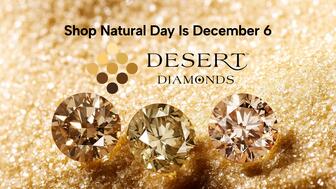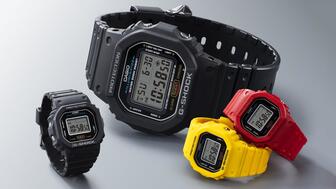Starting Jan. 1, customers can request the service for opal, peridot, and demantoid garnet.
The History Behind … Georgian mourning jewelry
This month, National Jeweler delves into the when, where and why of mourning jewelry worn between roughly 1714 and 1830.

New York—Seeing her first piece of Georgian mourning jewelry with a hand-painted scene some 25 years ago almost made Lenore Dailey cry, and it changed the course of career.
“I was amazed by it,” says the Michigan-based antique jewelry dealer and collector, recalling the powerful imagery of the piece, created in memory of a child who died at the age of 2, that steered her into buying and selling the category.
A quarter of a century later, Dailey, who declines the title of “expert” when it comes to mourning jewelry and instead refers to herself as an “enthusiastic collector with much to learn,” shared her knowledge for National Jeweler’s The History Behind.
This month’s feature focuses on mourning jewelry from the Georgian period, the era when King George I through George IV ruled England, from 1714 to 1830.
What is mourning jewelry? To understand the type of mourning jewelry worn during the Georgian period, one must first take a step back and look at the pieces worn prior to the mid-1600s.
Dailey says in that time, memento mori jewelry largely was donned to remind the wearer that they, too, would die one day; that life is transient and fleeting. (Memento mori is a Latin phrase that means “Remember that you will die.”)
“There was so much death and dying” in those days, Dailey observes. “Mothers lost children … there were so many diseases. Death was something that was on their
minds.”
The shift in mourning jewelry began around 1649 with the execution of King Charles I of England.
Dailey says many royalists wanted to show their support sympathy for the fallen king. They commissioned their jewelers to make pieces of faced Stuart crystal (the king was of the House of Stuart) with a portrait of the king underneath.
This began a trend among the wealthy aristocracy to have mourning pieces commissioned to remember their own lost loved ones, marking a shift from memento mori--pieces that were a reflection of mortality and the transient nature of life on earth--to mourning jewelry, which focuses on remembrance, grief, comfort and consolation.
What materials were used for these pieces? Some of the materials used to make Georgian era mourning jewelry were gold, along with silver and base metals, and rock crystal. Very rarely, diamonds were used.
Some of the scenes included in mourning pieces were painted on copper, vellum (a parchment made from animal skin), and ivory, trade in which now is severely restricted in the United States.
Human hair also was utilized, to paint the scenes and as part of the design.
How much is Georgian-era mourning jewelry worth today? Prices for pieces from this period range from $300 or $400 for a small locket to the thousands for larger, more elaborate pieces commissioned by the wealthier individuals of the day.
How can a retailer add this category to their antique jewelry offerings? Dailey said quality pieces from the Georgian era are fairly scarce. “You are going to have to hunt for them, just like I do,” she says.
Dealers who work in this category include Dailey, Samuel Gassman of E. Foxe Harrell in New York and Darlene Boyard.
No matter from whom a retailer chooses to source their Georgian mourning jewelry, Dailey offers this piece of advice: work with a reputable dealer who stands behind whatever they sell.
The Latest

The 111-year-old retailer celebrated the opening of its new location in Salem, New Hampshire, which is its third store in the state.

The new catalog features its most popular chains as well as new styles.

How Jewelers of America’s 20 Under 40 are leading to ensure a brighter future for the jewelry industry.

The filmmaker’s personal F.P. Journe “FFC” prototype was the star of Phillips’ recent record-setting watch auction in New York.


The new location in the Design District pays homage to Miami’s Art Deco heritage and its connection to the ocean.

Inflations, tariffs, and politics—including the government shutdown—were among consumers’ top concerns last month.

Roseco’s 704-page catalog showcases new lab-grown diamonds, findings, tools & more—available in print or interactive digital editions.

“Longtime favorite” presenters, as well as first-time speakers, will lead talks and workshops at the annual event in Tucson next year.

Silas Smith of Meridian Metalworks won the challenge with his pendant that blends Australian and American landscapes.

The sale of the 31.68-carat, sunset-hued stone was part of Sotheby’s first series of events and auctions in Abu Dhabi.

Most customers who walk into your store this month have made up their minds. Your job is to validate their choice, Emmanuel Raheb writes.

MatrixGold 3.11, the newest version of the jewelry design program, offers more flexibility, precision, and creative control.

The pavilion will be part of the 2026 JA New York Spring show, scheduled for March 15 to 17.

Kadet, a 1994 National Jeweler Retailer Hall of Fame inductee, helped grow the family-owned retailer in the Chicago area and beyond.

Billed as the world’s smallest wearable, Lumia Health’s new smart earrings have a health tracker subtly embedded in the back.

Don’t let those with December birthdays feel blue. Help them celebrate their month with blue zircon, turquoise, and tanzanite.

The new pink sapphire version of the piece dances with its wearer in the brand’s “Icons After Dark” holiday campaign.

A choice that’s generated a lot of commentary, Pantone says “Cloud Dancer” marks a fresh start and encourages relaxation and creativity.

The manufacturer’s holiday campaign features a gift guide filled with trending designs and jewelry that can be personalized.

The man was charged with theft, accused of ingesting the necklace while in a jewelry store in Auckland, New Zealand.

The Florida independent expanded its store from 8,000 to 14,000 square feet, fulfilling the vision of its late co-founder, Jim Dunn.

Sponsored by De Beers Group

The classic 5600 series G-Shock has been scaled down to about a tenth of its size, becoming a fully functioning watch ring.

The association’s annual conference and gala will take place Feb. 4, 2026, during the Tucson gem shows.

The January show will include a workshop for jewelry retailers on implementing AI to strengthen their businesses.

Fellow musician Maxx Morando proposed to the star with a chunky, cushion-cut diamond ring designed by Jacquie Aiche.




























